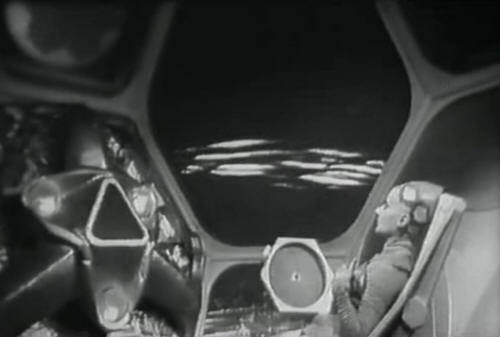= ASTRONAUTICAL EVOLUTION =
Issue 93, 1 August 2013 – 44th Apollo Anniversary Year
=============== AE ===============
The Futures We Love to Fear
Stephen Ashworth, Oxford, UK
Thinking about philosophies favourable or unfavourable to space colonisation and starship construction for the recent Philosophy of the Starship symposium (29 May 2013) led me to consider the genre of dystopian fiction.

The characters in these science fiction nightmares inhabit a highly mechanised world which forces them to behave more like machines than people. Their prototype could be E.M. Forster’s short story “The Machine Stops” (1909), in which a woman and her son live in different cells in a vast underground network of tunnels and are barely capable of enduring conditions on the surface of Earth, though whether because of changes to the atmosphere or because of changes to their own physiology is not made clear. The “machine” that sustains their lives has acquired an aura of divine infallibility, yet it breaks down when the delightfully clunky “committee of the mending apparatus” proves unable to mend itself.
The similarities to planetary or space colonies of the future are obvious: the characters’ physical inability to live in a “natural” planetary surface environment; their complete dependence on the machine to sustain every aspect of their lives; the physical restrictions on their movements in a network of small rooms and tunnels with spacecraft-like interiors (see image); their inability to go elsewhere.
This story is in fact extremely useful as a scenario for what might go wrong with any technology-dependent extraterrestrial colony. While the artists inspired by O’Neill’s designs depicted idyllic space villages nestling amidst attractive landscaping, “The Machine Stops” portrays the reverse: what must be avoided if space colonisation is to become an acceptable way of life for intelligent people.
Another early dystopia is the novel We, written by the Russian writer Yevgeny Zamyatin around 1921. This is similar in many ways to George Orwell’s 1984, and was in fact the direct inspiration for Orwell’s novel, but predates it by a quarter century. One of its important themes is that of surveillance: all buildings are made of glass so that the Guardians of the Unified State can see what everybody is doing, and even the walls have high-tech ears capable of registering conversations. All letters are read by the Guardians before being delivered to their addressee. At the same time, most of each individual’s day is pre-scheduled (very like an astronaut’s – they even all wear identical blue uniforms).
We is unusual among dystopias in that it incorporates a space travel element: its main character, D-503, is chief designer of a space vehicle called the INTEGRAL, whose task will be to propagandise the inhabitants of other planets, and convert them, forcibly if necessary, to the life of supposed reason and happiness of the Unified State.
The issue of privacy and liberty versus surveillance in the service of public security and economic efficiency is an increasingly urgent one on Earth, and will surely be equally so in space once people start living away from Earth for a significant fraction of their lives. This would have been one of the major issues addressed by the recent London symposium on extraterrestrial liberty, organised by Prof. Charles Cockell (13-14 June 2013). It will be interesting to see what conclusions were reached there, once papers from that meeting are published.
As in other dystopias, We portrays the life of people supposedly governed totally by reason, logical thought, collective planning, science and technology. Yet Zamyatin has a delightfully light touch, for example:
“It’s spring. From beyond the Green Wall, from the wild plains out of sight in the distance, the wind is carrying the honeyed yellow pollen of some flower. This sweet pollen dries the lips – you keep running your tongue over them – and every woman you meet (and every man, too, of course) must have these sweet lips. This somewhat interferes with logical thought.”
His elaborate descriptive style presents problems of interpretation if you are delving into the original Russian, of course, but in my opinion the effort is worth it.
References
E.M. Forster, “The Machine Stops”, The Oxford and Cambridge Review, November 1909; republished in The Eternal Moment and Other Stories, 1928; text available online.
“The Machine Stops” was filmed in 1966 for the series Out of the Unknown; this is very faithful to the story Forster wrote, and is currently available on YouTube.
E.I. Zamyatin’s novel We is available here in English translation in the Penguin Classics edition.